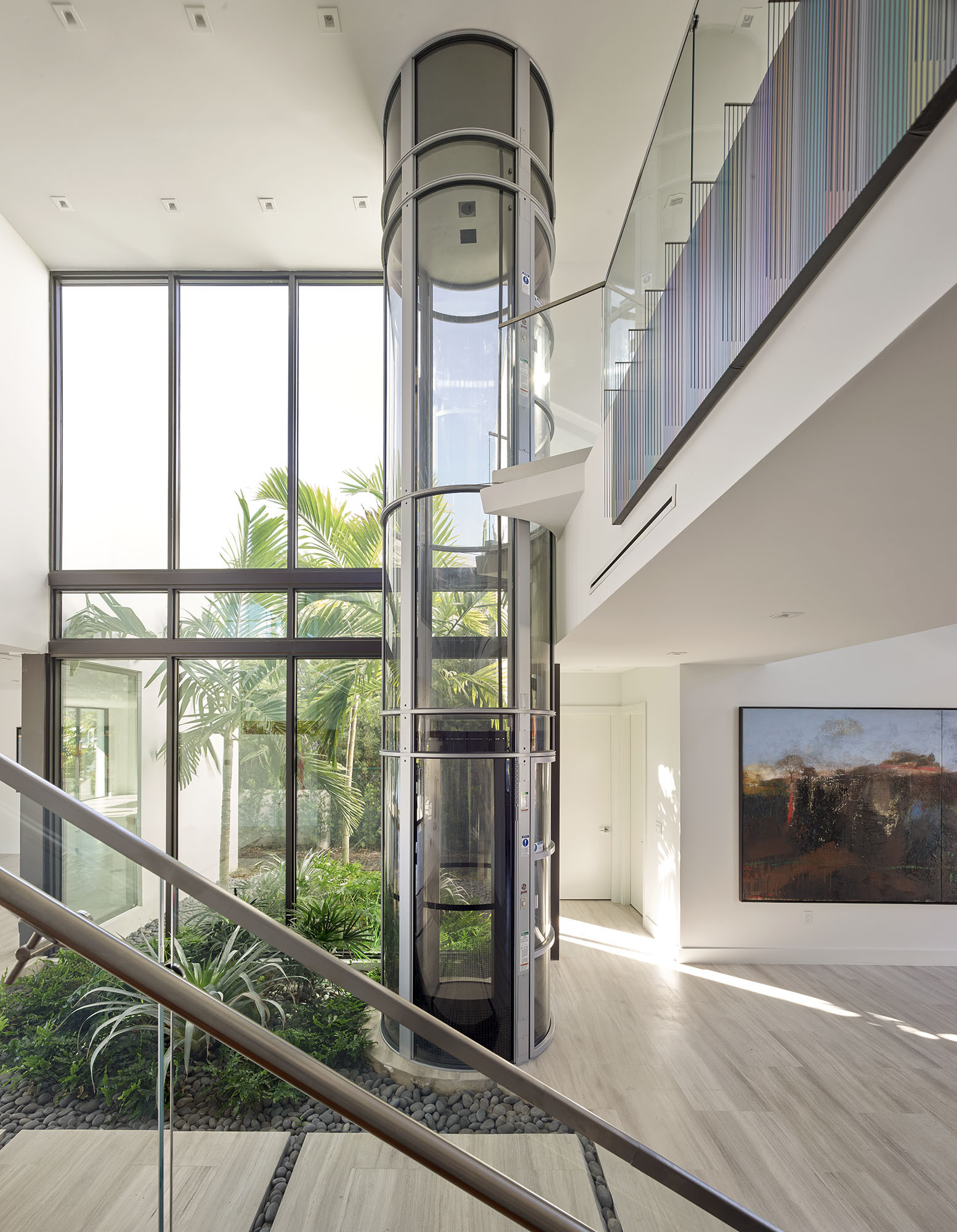The Vacuum Elevator combines a smooth vertical cylinder with a coaxial car that moves up and down through air suction. The principle operation of the elevator is based on the ascending push generated by the difference between the atmospheric pressure on the top of the car and the atmospheric pressure under the car. The depression (vacuum) required to lift the car is achieved by turbines operating as exhaust fans which are located at the top of the elevator.The piston gear surrounded by a sliding air tight seal allows an almost frictionless movement and hoists the car due to the pneumatic depression generated on the upper part.A valve regulating inflow of air controls the pneumatic depression, enables descent and controls the speed of the car.The lower part of the shaft is open to ensure free entrance of air at atmospheric pressure.At each floor or level, perimeter seals on the door are self-sealing due to the action of the atmospheric pressure.The car has locking devices to stop at the upper and lower limits of travel.A safe braking device (chute) activates in case of free fall.A standard mount PVE generates approximately 85 decibels during operation.This is comparable to a vacuum while operational.A split unit configuration and extra isolated PVE generates minimal noise.While the split unit configuration was designed for lower overhead ceiling clearances, the split unit configuration is the only noise reduction solution if that is what is of importance.

The Pneumatic Vacuum Elevator consists of three main parts:
EXTERIOR CYLINDER: The cylinder is a transparent self-supporting tube, built around a specially designed aluminum structure. The tube walls are made of curved polycarbonate sheets. The tube consists of modular sections, which easily can fit into one another. The roof of the tube, made of steel, ensures air tight closures with suction valves and inlets.
ELEVATOR CAR: The car runs inside the cylinder on rails/columns, which are part of the same self supporting structure of the cylinder. The walls of the car are made of transparent polycarbonate panels. The car is also equipped with an anchoring system that activates on reaching the indicated floor, provides precise but smooth stops, and locks the car mechanically.
SUCTION ASSEMBLY: “Head Unit” is on the top of the tube/cylinder, where the turbines, the valves, and the controls are located. The head unit is built and placed on either the same tube that holds the car (standard), or separately (split unit) at distances of up to 30 linear feet (10m) from the lift. The frame of the suction assembly is made out of either fiber glass or steel depending upon the model.